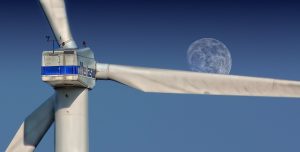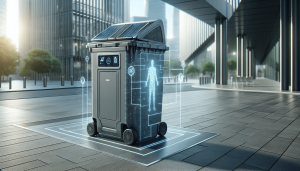In today’s world, where water conservation is more crucial than ever, we have the incredible advantage of utilizing technology to make a real difference. In our discussion of “How Can I Use Technology To Conserve Water At Home?”, we’ll explore practical and innovative ways to integrate smart tools and devices into our daily routines. From intelligent irrigation systems to water-efficient appliances, we’ll discover how these advancements can help us not only save water but also reduce our utility bills and contribute to a more sustainable future. Let’s dive into the various technologies that can transform our homes into eco-friendly havens. How Can I Use Technology To Conserve Water At Home?
Have you ever wondered how we can use technology to conserve water at home? With the increased awareness of environmental sustainability, many of us are seeking ways to reduce our water consumption. Fortunately, technology offers various innovative solutions to help us achieve this goal without compromising our daily habits and comfort.
The Importance of Water Conservation
Water is a finite resource, and conserving it is essential for the health of our planet. Not only does water conservation help preserve our natural ecosystem, but it also saves us money on water bills. By adopting technological solutions, we can significantly reduce our water footprint and contribute to global sustainability efforts.
Understanding Our Water Footprint
Before diving into how technology can help us conserve water, it’s essential to understand what a water footprint is. Our water footprint is the total volume of freshwater we use directly and indirectly. This includes water used in our homes for drinking, cooking, washing, and gardening. Identifying our water usage patterns helps pinpoint areas where technology can make a big difference.
Smart Home Devices
Technology has revolutionized our homes, making them smarter and more efficient. Smart home devices are among the top solutions for water conservation.
Smart Irrigation Systems
One of the biggest water guzzlers in our homes is the irrigation system for our lawns and gardens. Traditional irrigation systems often waste water through inefficient scheduling and delivery. Smart irrigation systems, however, use sensors and weather data to optimize watering schedules, ensuring that our plants get just the right amount of water without wastage.
Benefits of Smart Irrigation Systems:
| Benefit | Description |
|---|---|
| Weather Adaptation | Adjusts watering schedules based on real-time weather data |
| Leak Detection | Detects and alerts us of leaks in the system |
| Plant-Specific Zones | Customizes watering based on plant type and location |
| Remote Control | Allows us to control the irrigation system remotely via smartphone apps |
Smart Water Meters
Smart water meters provide real-time data on our water usage. These devices can help us identify leaks, track usage patterns, and receive alerts when unusual water consumption is detected. By keeping us informed, smart water meters empower us to make better decisions about our water use.
Features of Smart Water Meters:
| Feature | Description |
|---|---|
| Real-Time Monitoring | Provides live data on water consumption |
| Usage Alerts | Sends notifications if there is an unusual spike in water use |
| Leak Detection | Identifies potential leaks quickly to avoid wastage |
| Historical Data Analysis | Allows us to review past water usage to identify patterns and opportunities for saving |

Water-Saving Appliances
Modern appliances are designed with water efficiency in mind. Investing in water-saving appliances can lead to significant reductions in our overall water consumption.
High-Efficiency Washing Machines
Traditional washing machines can use a lot of water, especially if we’re still using older models. High-efficiency washing machines, on the other hand, use less water and energy per load. These machines adjust the amount of water based on the size of the load, ensuring no water is wasted.
Advantages of High-Efficiency Washing Machines:
| Advantage | Description |
|---|---|
| Less Water Usage | Uses significantly less water per wash |
| Energy Efficient | Consumes less energy, reducing our overall carbon footprint |
| Gentle on Clothes | Maintains the quality of our clothes by using precise water levels |
| Reduced Utility Bills | Saves money on both water and electricity bills |
Low-Flow Fixtures
Installing low-flow fixtures in our sinks, showers, and toilets can drastically cut down our water use. These devices reduce the flow rate without compromising performance, giving us the same experience with less water.
Types of Low-Flow Fixtures:
| Fixture | Description |
|---|---|
| Low-Flow Showerheads | Reduces water flow while maintaining water pressure |
| Dual-Flush Toilets | Provides two flushing options for liquid and solid waste, saving water per flush |
| Low-Flow Faucets | Reduces water flow from sinks without sacrificing cleaning efficiency |
Advanced Leak Detection Systems
Leaks can lead to significant water wastage and often go unnoticed until the damage is severe. Advanced leak detection systems use technology to identify leaks early and notify us so we can take action promptly.
Sensors and Detectors
Placing sensors and detectors in areas prone to leaks, such as under sinks and near water heaters, can help us catch leaks before they become major problems. These systems often come with alarms or notifications that alert us as soon as a leak is detected.
Benefits of Sensors and Detectors:
| Benefit | Description |
|---|---|
| Early Detection | Identifies leaks early, preventing significant water loss and damage |
| Cost Savings | Reduces costs associated with water damage repairs and high water bills |
| Ease of Installation | Quick and simple to install in strategic locations around the home |
| Peace of Mind | Provides assurance that potential water damage can be managed quickly |
Whole-Home Leak Detection Systems
For comprehensive protection, whole-home leak detection systems monitor water flow throughout the entire house. These systems can automatically shut off the water supply when they detect abnormal usage patterns, protecting our home from extensive water damage and wastage.
Advantages of Whole-Home Leak Detection Systems:
| Advantage | Description |
|---|---|
| Comprehensive Monitoring | Monitors water flow throughout the home |
| Automatic Shutoff | Automatically turns off water supply when a leak is detected |
| Long-Term Savings | Prevents major water damage, saving money on repairs |
| Convenient Management | Often includes a user-friendly app for monitoring and managing water usage |

Greywater Recycling Systems
Recycling greywater (wastewater from baths, sinks, washing machines, and other kitchen appliances) can significantly reduce the fresh water we use for non-drinking purposes, such as irrigation and toilet flushing.
How Greywater Systems Work
Greywater systems collect and filter wastewater, removing contaminants so it can be reused safely. These systems can be installed at different scales, from individual appliances to entire homes.
Components of a Greywater Recycling System:
| Component | Description |
|---|---|
| Collection System | Captures greywater from selected sources |
| Filter Units | Removes contaminants to make greywater safe for reuse |
| Storage Tanks | Stores treated greywater for future use |
| Distribution System | Delivers recycled greywater to non-potable water systems like irrigation or toilets |
Benefits of Greywater Recycling
By implementing greywater recycling, we make significant strides in water conservation, reducing our demand for fresh water and minimizing our environmental impact.
Key Benefits:
| Benefit | Description |
|---|---|
| Reduced Freshwater Use | Less reliance on fresh water for non-potable uses |
| Lower Water Bills | Saves money by reusing greywater |
| Environmental Impact | Reduces the amount of wastewater entering sewage systems |
| Sustainable Water Management | Promotes long-term sustainable use of water resources |
Rainwater Harvesting Systems
Rainwater harvesting involves collecting and storing rainwater for later use. This ancient practice is now enhanced with modern technology, making it an efficient way to conserve water at home.
Components of Rainwater Harvesting Systems
Modern rainwater harvesting systems consist of several components that work together to collect, store, and utilize rainwater effectively.
Components:
| Component | Description |
|---|---|
| Catchment Area | Surface where rainwater is collected, typically a roof |
| Gutters and Downspouts | Channels that direct rainwater from the catchment area to the storage system |
| First Flush Diverters | Ensures initial dirty rainwater is separated from clean water |
| Storage Tanks | Holds the collected rainwater |
| Filtration Systems | Removes debris and contaminants before water is stored or used |
| Distribution Systems | Delivers stored rainwater for use in irrigation, toilet flushing, and other non-potable uses |
Uses for Harvested Rainwater
Harvested rainwater can be used for various purposes around the home, reducing our dependence on municipal water supplies.
Uses:
| Use | Description |
|---|---|
| Irrigation | Watering gardens and landscapes |
| Toilet Flushing | Using rainwater instead of potable water for flushing toilets |
| Laundry | Washing clothes using rainwater |
| Cleaning | Cleaning outdoor areas, patios, and vehicles |
Benefits of Rainwater Harvesting
There are numerous benefits to collecting and using rainwater, from conserving municipal water supplies to reducing our water bills.
Benefits:
| Benefit | Description |
|---|---|
| Water Conservation | Reduces reliance on municipal water sources |
| Cost Savings | Lowers water bills by using free rainwater |
| Reduced Flooding | Decreases runoff, helping reduce flooding in urban areas |
| Sustainability | Supports sustainable water management practices |

Smart Showers and Faucets
Smart showers and faucets come equipped with technology to monitor and reduce water usage. These devices help us understand our water consumption and make it easier to adopt water-saving habits.
Smart Showers
Smart showers can control water flow, temperature, and timing, all from an easy-to-use interface or smartphone app. They are designed to provide the same comfortable shower experience while using less water.
Features:
| Feature | Description |
|---|---|
| Flow Control | Adjusts water flow to optimal levels |
| Temperature Precision | Maintains preferred temperature, avoiding water waste while adjusting |
| Usage Monitoring | Tracks water usage and provides insights |
| Timer Settings | Encourages shorter showers by setting timers |
Smart Faucets
Smart faucets use sensors to automatically turn water on and off, ensuring water is only used when needed. They also allow for precise water flow adjustments, reducing unnecessary use.
Features:
| Feature | Description |
|---|---|
| Touchless Operation | Turns on and off automatically to save water |
| Flow Control | Allows precise control of water flow |
| Usage Tracking | Monitors and provides data on water consumption |
| Temperature Control | Maintains desired temperature without wasting water |
Conclusion
Water conservation is critical for the sustainability of our planet and can lead to significant savings on our utility bills. By using technology, we have access to innovative solutions that make it easier to reduce our water usage without compromising on comfort or convenience. From smart irrigation systems and water-saving appliances to advanced leak detection and greywater recycling, these technologies offer practical ways to conserve water at home.
Implementing even a few of these solutions can make a substantial difference. Let’s take proactive steps towards water conservation through technology, ensuring we contribute positively to our environment and future generations. Together, we can make our homes more sustainable, one drop at a time.



